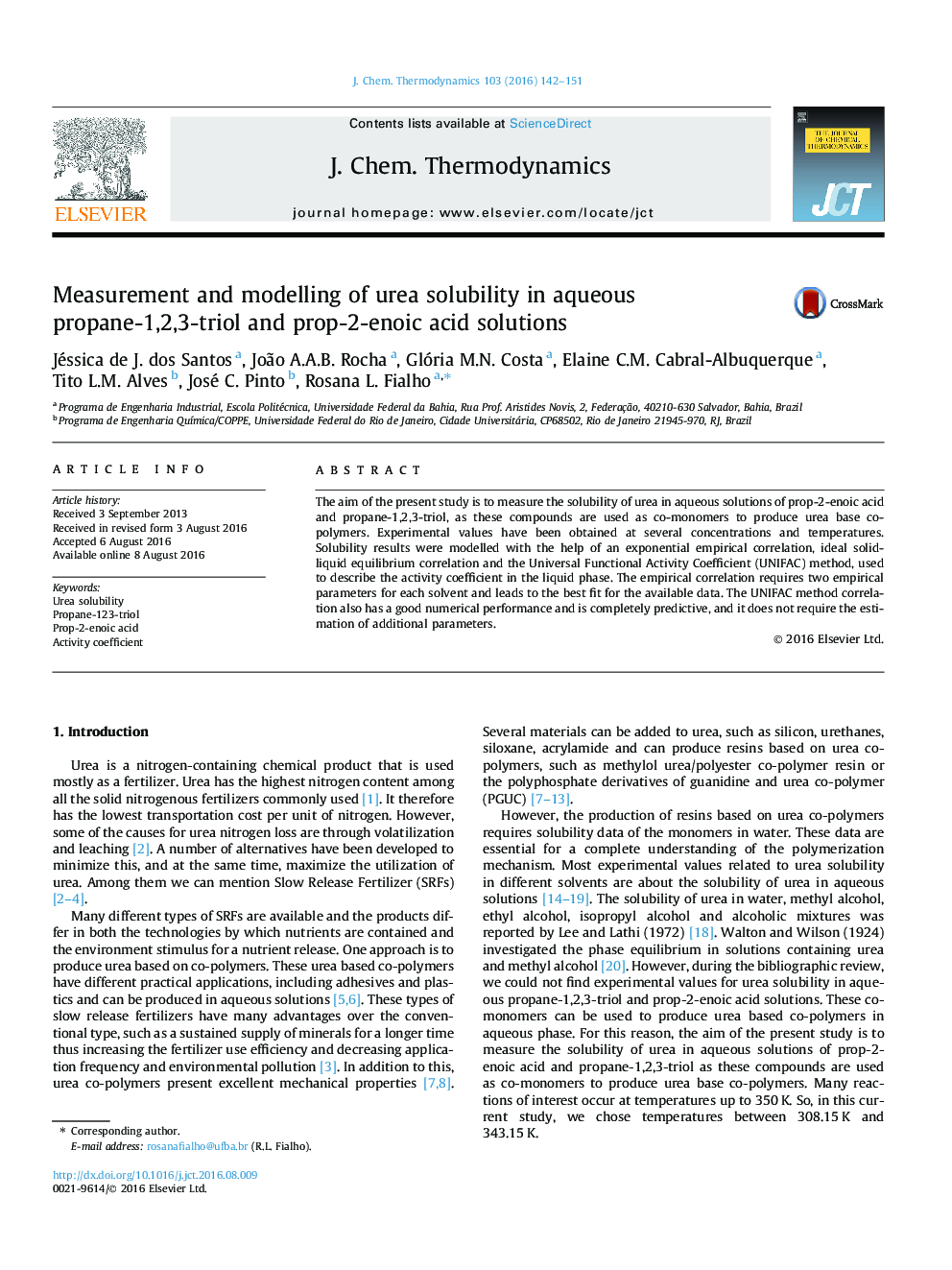| Article ID | Journal | Published Year | Pages | File Type |
|---|---|---|---|---|
| 6476919 | The Journal of Chemical Thermodynamics | 2016 | 10 Pages |
•Solubilities were shown to increase with temperature and to decrease with the increasing organic solvent content.•The UNIFAC method provided good fitting of the available data, after the estimation of a single model parameter.•The empirical method showed to be more efficient to describe several solution concentrations however, it is not predictive.
The aim of the present study is to measure the solubility of urea in aqueous solutions of prop-2-enoic acid and propane-1,2,3-triol, as these compounds are used as co-monomers to produce urea base co-polymers. Experimental values have been obtained at several concentrations and temperatures. Solubility results were modelled with the help of an exponential empirical correlation, ideal solid-liquid equilibrium correlation and the Universal Functional Activity Coefficient (UNIFAC) method, used to describe the activity coefficient in the liquid phase. The empirical correlation requires two empirical parameters for each solvent and leads to the best fit for the available data. The UNIFAC method correlation also has a good numerical performance and is completely predictive, and it does not require the estimation of additional parameters.
